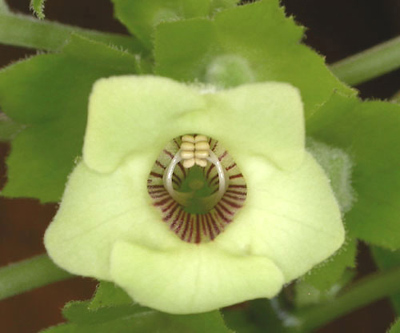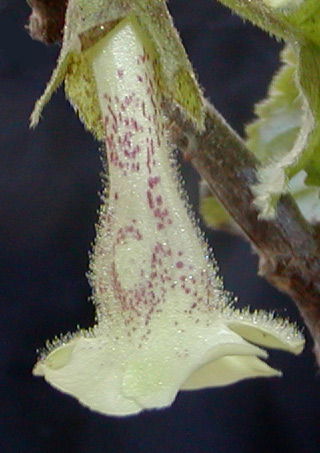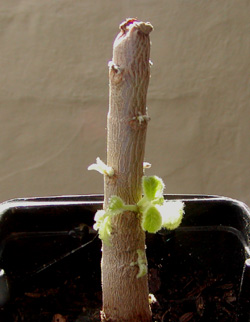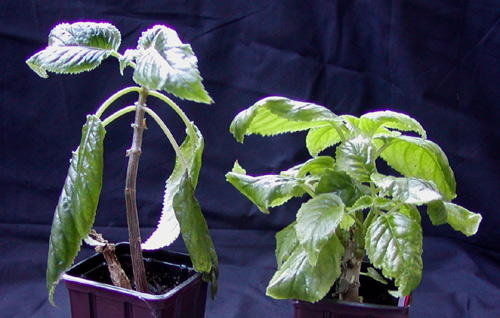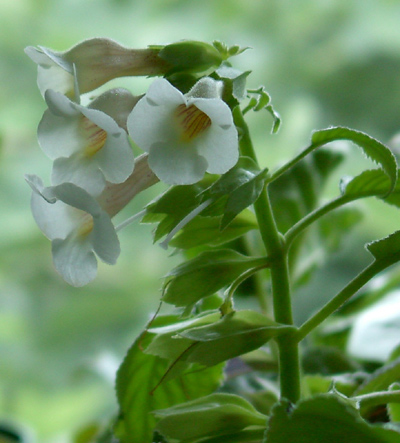|
An interesting feature of the woody stem is the vertical striations.
They resemble the markings on the stems of Paliavana tenuiflora.
I do not know what the significance of the markings is.
It looks like maybe the bark is splitting.
In the winter of 2008-2009, I had two plants, one indoors and one outdoors.
The indoor plant is shown at the left, the outdoor one (picture taken March 2009) at the right.
Both were mostly thick, bare stems, with the indoor one somewhat taller.
In a certain sense, it appears that this trunk is acting like a tuber.
In the spring, the two plants resumed growth, but not in the same way.
My indoor plant put up a new shoot from underground, beside the base of the trunk,
the trunk then withering.
On the other hand, my outdoor plant put out new shoots from nodes along the trunk.
The results can be seen in the photograph below, taken July 2009.
The indoor plant is on the left.
It was being grown in a sunny window, while the outdoor plant was in deep shade.
Quite a difference in the amount of foliage!
Unfortunately, both plants expired several years ago.
This is not an easy species to grow.
|

